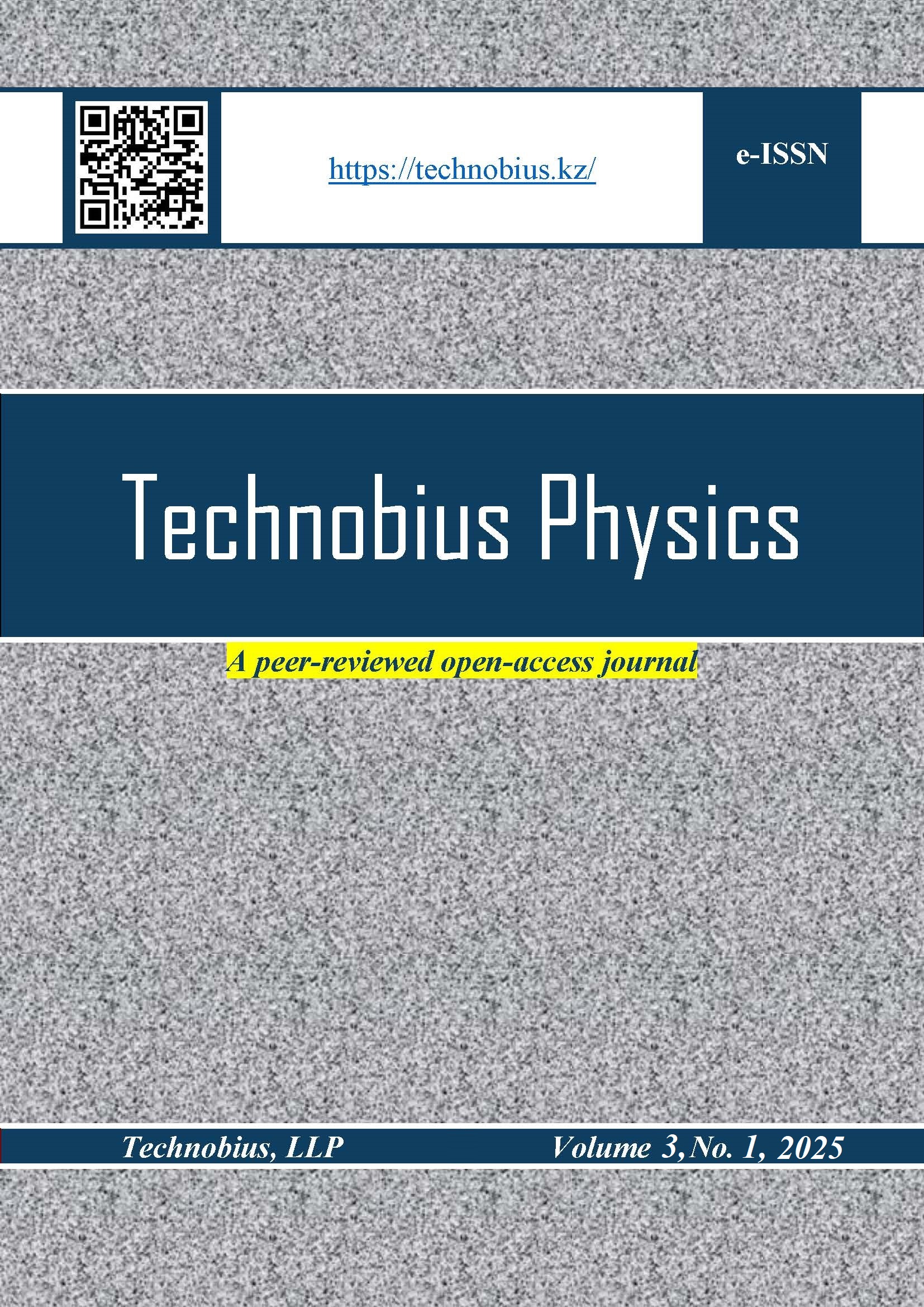Relaxation time measurement in liquids using compact NMR
DOI:
https://doi.org/10.54355/tbusphys/3.1.2025.0027Keywords:
NMR relaxometry, longitudinal relaxation, transverse relaxation, spin echo, signal fittingAbstract
This study investigates the influence of experimental parameters on the accurate determination of longitudinal and transverse relaxation times in liquids using compact nuclear magnetic resonance relaxometry. Water and glycerin were selected as representative samples due to their contrasting viscosities and relaxation behaviors. The primary objective was to evaluate how repetition time, echo time, number of data points, and time step affect the precision of T₁ and T₂ measurements. Longitudinal relaxation times were determined using a variable repetition time method, while transverse relaxation times were measured via a multi-echo spin sequence. Exponential fitting algorithms were employed to extract relaxation parameters from recorded signal amplitudes. For water, the relaxation times were found to be approximately 3.0 s for T₁ and 1.423 s for T₂. In contrast, glycerin exhibited significantly shorter relaxation times, with T₁ estimated at 0.126 s and T₂ at 0.094 s. The results demonstrated that accurate estimation of relaxation times requires carefully optimized acquisition settings. Specifically, repetition time must exceed three times the T₁ value to ensure full longitudinal recovery, while short echo times and a high number of echoes are essential for reliable T₂ determination. The findings address a critical methodological gap in relaxometry protocols and offer practical recommendations for enhancing measurement accuracy in simple liquids.
Downloads
Metrics
References
M. Goldman, “ADVANCES IN MAGNETIC RESONANCE Formal Theory of Spin-Lattice Relaxation,” J. Magn. Reson., vol. 149, pp. 160–187, 2001, doi: 10.1006/jmre.2000.2239. DOI: https://doi.org/10.1006/jmre.2000.2239
H. J. Mamin et al., “Nanoscale nuclear magnetic resonance with a nitrogen-vacancy spin sensor,” Science (80-. )., vol. 339, no. 6119, pp. 557–560, Feb. 2013, doi: 10.1126/SCIENCE.1231540/SUPPL_FILE/MAMIN.SM.PDF. DOI: https://doi.org/10.1126/science.1231540
S. C. L. Deoni, T. M. Peters, and B. K. Rutt, “Determination of optimal angles for variable nutation proton magnetic spin-lattice, T1, and spin-spin, T2, relaxation times measurement,” Magn. Reson. Med., vol. 51, no. 1, pp. 194–199, Jan. 2004, doi: 10.1002/MRM.10661. DOI: https://doi.org/10.1002/mrm.10661
K. Li et al., “Optimized inversion recovery sequences for quantitative T1 and magnetization transfer imaging,” Magn. Reson. Med., vol. 64, no. 2, pp. 491–500, 2010, doi: 10.1002/MRM.22440. DOI: https://doi.org/10.1002/mrm.22440
S. Shin, S. D. Yun, and N. J. Shah, “T2* quantification using multi-echo gradient echo sequences: a comparative study of different readout gradients,” Sci. Reports 2023 131, vol. 13, no. 1, pp. 1–14, Jan. 2023, doi: 10.1038/s41598-023-28265-0. DOI: https://doi.org/10.1038/s41598-023-28265-0
D. Cicolari et al., “A method for T1 and T2 relaxation times validation and harmonization as a support to MRI mapping,” J. Magn. Reson., vol. 334, p. 107110, Jan. 2022, doi: 10.1016/J.JMR.2021.107110. DOI: https://doi.org/10.1016/j.jmr.2021.107110
R. R. Ernst, G. Bodenhausen, and A. Wokaun, “Principles of Nuclear Magnetic Resonance in One and Two Dimensions,” Princ. Nucl. Magn. Reson. One Two Dimens., May 1990, doi: 10.1093/OSO/9780198556473.001.0001. DOI: https://doi.org/10.1093/oso/9780198556473.001.0001
D. A. Barskiy et al., “Zero- to ultralow-field nuclear magnetic resonance,” Prog. Nucl. Magn. Reson. Spectrosc., vol. 148–149, p. 101558, Aug. 2025, doi: 10.1016/J.PNMRS.2025.101558. DOI: https://doi.org/10.1016/j.pnmrs.2025.101558
Y. Luo et al., “Deep learning and its applications in nuclear magnetic resonance spectroscopy,” Prog. Nucl. Magn. Reson. Spectrosc., vol. 146–147, p. 101556, Apr. 2025, doi: 10.1016/J.PNMRS.2024.101556. DOI: https://doi.org/10.1016/j.pnmrs.2024.101556
D. E. Demco, A. M. Oros-Peusquens, and N. J. Shah, “Nonlinear effects in magnetic resonance localized spectroscopy and images,” Prog. Nucl. Magn. Reson. Spectrosc., vol. 146–147, p. 101557, Apr. 2025, doi: 10.1016/J.PNMRS.2025.101557. DOI: https://doi.org/10.1016/j.pnmrs.2025.101557
R. Y. Hwang et al., “Measuring the water content of polymer electrolyte membranes using double points of proton magic angle spinning nuclear magnetic resonance data,” Polymer (Guildf)., vol. 309, p. 127431, Sep. 2024, doi: 10.1016/J.POLYMER.2024.127431. DOI: https://doi.org/10.1016/j.polymer.2024.127431
Downloads
Published
How to Cite
License
Copyright (c) 2025 Aigul Akkulova

This work is licensed under a Creative Commons Attribution-NonCommercial 4.0 International License.








